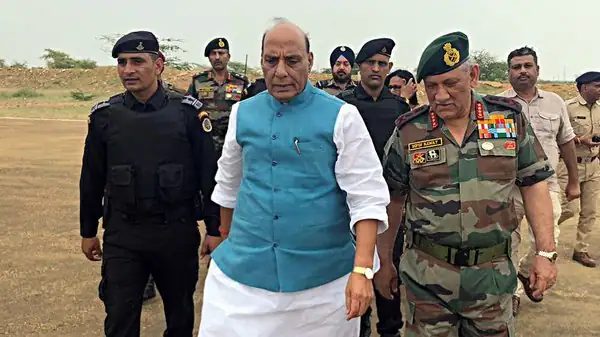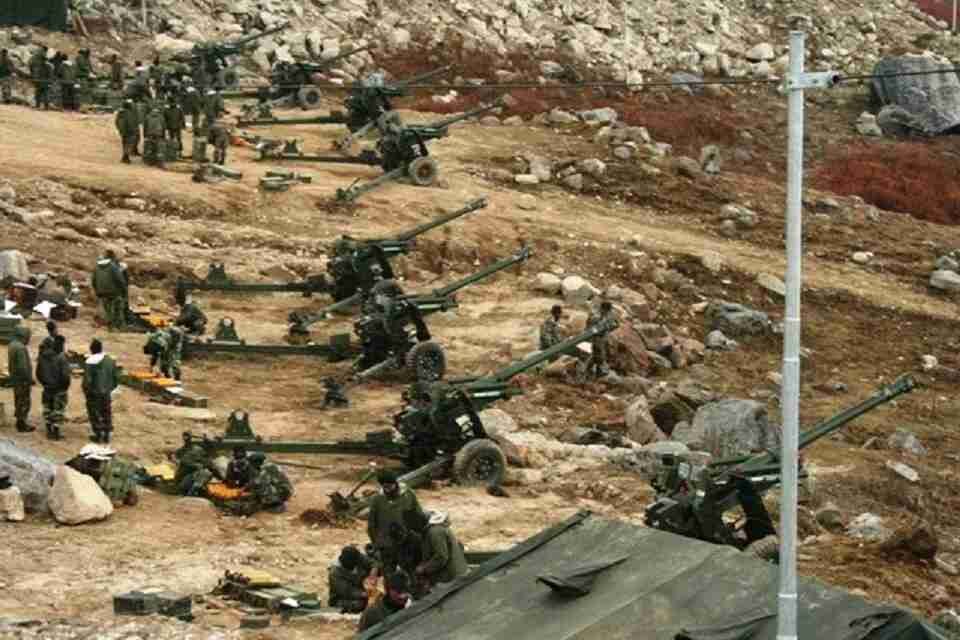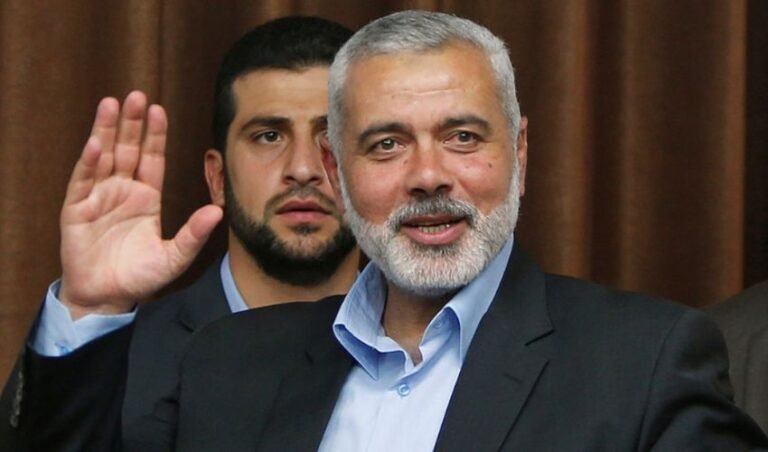What is the world’s largest nuclear flashpoint? If one were to pose such a question, the names of Korea and Ukraine will immediately pop into our minds. However, one will be surprised to discover that it Kashmir that is the most likely contender for this unfortunate title. The region is not only the most heavily militarized region on Earth but is also the world’s only nuclear tri-juncture. It is here that India, Pakistan and China, Asia’s three Nuclear powers Converge. The Conflict in Kashmir is classified as a ‘frozen conflict’, one which has the potential to de-freeze and cause a global catastrophe at a moment’s notice.
India vs Pakistan: Geo-political dynamics of the Asian nuclear race
China, India, and Pakistan are among the top 10 military powers according to the Global Firepower Review ranking. Moreover, all three are steadily increasing their nuclear stockpiles and modernizing their delivery systems at an alarming rate. While the world remains fixated on Ukraine, a silent nuclear arms race brews in this part of Asia, largely unnoticed. Cooperation between these countries on the issue of nuclear proliferation is also unlikely occur. This makes the nuclear quagmire between these countries all the more dangerous.

In the geopolitical chess game of Asia, a unique phenomenon unfolds, dubbed ‘the deterrence chain-reaction’. China lays at the heart of this which boasts the largest nuclear stockpile of the trio. China is racing hard to catchup to the US, its geo-political rival. China’s actions are however, creating a domino effect. India, trying to bridge the gap with China is also ramping up its own nuclear capabilities, which, in turn, compels Pakistan to follow suit. Thus, what emerges is a complex web of deterrence with each nation trying to establish deterrence with its rival.
India vs Pakistan: a comparison of strategic postures
Pakistan’s Nuclear Doctrine
India is a country with an economy ten times larger than Pakistan’s, a population nearly five, and a land area four times greater. This massive gap between the 2 countries has forced Pakistan to adopt a pro-active nuclear policy. While Pakistan doesn’t have a formally declared nuclear doctrine, the country follows what is termed as ‘strategic ambiguity’. This deliberate ambiguity has allowed the country more flexibility to adjust its policy in accordance to the everchanging geo-political realities. This has also allowed Pakistan to wage a low level proxy conflict with India without much fear of potential blow-back.
Pakistan unlike India doesn’t follow a no-first use policy. This is motivated by the huge gap in conventional forces between India and Pakistan and India’s adoption of ‘Cold Start Doctrine“. This strategy is reminiscent of the Soviet ‘7 Days to the Rhine’ plan against NATO. It envisions the rapid deployment of armored and air force units for swift, shallow incursions into Pakistani territory, thereby incapacitating its military. To counter this threat, Pakistan like NATO has developed low-yield nuclear weapons tasked with neutralizing India’s superior conventional forces.

India’s Nuclear Doctrine
India adheres to a strict ‘no first use’ nuclear policy, often described as a ‘restrained doctrine.’ This stance came under scrutiny when the Bharatiya Janata Party (BJP), which ascended to power in 2014 and remains in charge, hinted at revising India’s nuclear strategy in its election manifesto. Despite initial concerns, BJP leaders reassured that the ‘no first use’ policy would remain inviolable. However, on the eve of the anniversary of India’s nuclear tests, a statement by Rajnath Singh, India’s Defence Minister, sparked international concern. He said, “Till today, our nuclear policy is ‘no first use’. What happens in the future will depend on the circumstances.” This remark caused particular unease in Islamabad, exacerbating the already tense relations between Pakistan and New Delhi.

However, strategic pundits say that an overhaul of India’s nuclear doctrine was long over-due and expected. Similar to Pakistan, India confronts a widening military gap with China which has prompted India to adopt a more assertive nuclear doctrine. Calls for India to revamp it’s nuclear doctrine became profound after clashes between India and China on the Line of Actual Control.
India vs Pakistan: A comparison of capabilities
The nuclear capabilities of India and Pakistan are greatly underwhelming as compared to the top dogs, the US and Russia. According to the global arms watchdog Sipri, Pakistan’s stockpile stands at 170 warheads, while India boasts a slightly smaller arsenal of 164 warheads. Most of the nukes India and Pakistan possess are relatively small, with an average yield of just a few kilotons. India and Pakistan are predicted to possess nukes with yields just between 12 to 40 KTs. These assumptions are made according to data available to the public during India’s and Pakistan’s nuclear tests in the 1990s. These yields pale compared to the arsenals of other countries, which often have a destructive power in a completely different ballpark, i.e., Megatons. The US’s most destructive nuclear bomb, the B 83 boasts a destructive power of 1200 KTs.
However, it is essential to point out that these are just assumptions by strategic analysts. These analysts point out the lack of access to the element ‘titanium’ in both countries. Titrium is fundamental to boosting a nuclear device and enabling greater yields. In case that this analysis is deemed wrong, Pakistan and India may own nukes with yields over 100 KTs.
Pakistan and it’s nuclear delivery systems
India and Pakistan each maintain a comprehensive nuclear triad. Pakistan’s nuclear delivery systems are predominantly land-based road mobile missiles. These missiles include 4 short range missile series called the Hatf 2, 3, 4 and 9. Pakistan’s missile arsenal also incudes 2 medium ranged missiles that enable it to target the entirety of India’s land mass. These are called the Shaheen and Ghauri series of missiles. Another MIRV capable missile called the ‘Ababeel’ that is expected to have an even greater range is currently under development. Pakistan has also developed sea based nuclear capable cruise missiles called the Babur series that have a range of 450km that can be launched from its conventional submarines. Overall Pakistan’s missile arsenal has a range between 60kms to 2750km. Completing Pakistan’s nuclear triad are its air assets, including fleets of F-16s and Mirage 3 and 5 fighter jets, equipped to deliver nuclear payloads.

Moreover, Pakistan relies heavily on the deployment of tactical nukes, with yields under 5 kilotons, designed for use in battlefields. In contrast, India prioritizes the development of strategic nuclear weapons. This doctrinal divergence means that while Pakistan may have a numerical advantage, its arsenal packs significantly less punch than India’s. This highlights the contrasting military philosophies of the two nations, with Pakistan focusing on tactical deterrence and India on strategic dominance.
India and its nuclear delivery systems
India relies on its Agni and Prithvi series of Ballistic Missiles for long and medium range nuclear deterrence. However, the crown jewel of its arsenal is the Agni 5, India’s sole intercontinental ballistic missile. Agni 5 boasts a formidable range of 5,000 kilometers capable of reaching most of China. On the 11th of March 2024, India successfully tested it’s MIRV capable Agni 5 missile becoming part of an exclusive club of nations with this advanced technology. Unlike Pakistan which depends solely on Cruise missiles for its sea based deterrence, India also possess Submarine launched ballistic missiles. India possesses Russian K-4 and K-15 missiles for it’s sea based deterrence. Complementing its land and sea deterrents, India’s aerial nuclear delivery is ensured by an array of advanced fighter jets, including Rafales, Jaguars, and Sukhoi-30s. Overall India’s missile arsenal has a range between 150kms to 5000 Kms.

India vs Pakistan: The Toll of a nuclear war
A history of past brushes
India and Pakistan have come close to war several times, and fears that even a minor skirmish could turn into a nuclear Armageddon are well-founded. According to Mike Pompeo, the US Secretary of State during the Trump administration, India and Pakistan came close to a nuclear war in 2019. These remarks were made in his memoir, ‘Never Give an Edge’. In his memoir, Pompeo claims that both India and Pakistan were moving their nukes in preparation for potential strikes. However, this was later diffused with diplomacy conducted by all three sides. In the past, similar preparations were made in the wake of the 2008 Mumbai terror attacks, the 2001 attack on Indian parliament, and during the 1999 Kargil conflict.

A nuclear exchange between India and Pakistan albeit even limited in nature will be a global nightmare. Analysts and scientists predict a staggering death toll that may even eclipse the death tolls of the two world wars combined!
The Human Cost
India has 400 cities with a population in excess of 100,000 while Pakistan numbers at 60 such cities. According to simulations, a 15KT explosion on such a city will cause an immediate death toll of around 700,000 people. However, if a boosted 100KT device is detonated, the death toll will be greater at 1.5 million people. Thus an immediate death toll in the ballpark of 22 million to 125 million people is predicted. However, this is not just the complete picture yet.
Firestorms resulting from these bombings will be so great that millions of tons of ash and soot will be released into the atmosphere. This soot and ash will cover South Asia and the rest of the world, blocking sunlight and prompting mass crop failures. This will lead to a massive famine not only in South Asia but the rest of the world as well. Thus, a nuclear war will be accompanied by a gigantic famine gripping South Asia that will kill even more people as a result.
Conclusion
The nuclear capabilities of India and Pakistan weave a complex story, one that extends far beyond deterrence and strategic doctrines. This narrative delves deeply into the shared history and humanity of two nations, bound by geography yet separated by borders. It’s a tale that’s not just about missiles and warheads but also about the long shadows these weapons cast. Tactical and strategic deployments bring both security and fear, highlighting the precarious balance between maintaining deterrent capabilities and the pursuit of peace. The region’s future, influenced by these nuclear shadows, hangs in the balance, underscoring the need for a new approach to resolve these long-standing tensions.



















+ There are no comments
Add yours